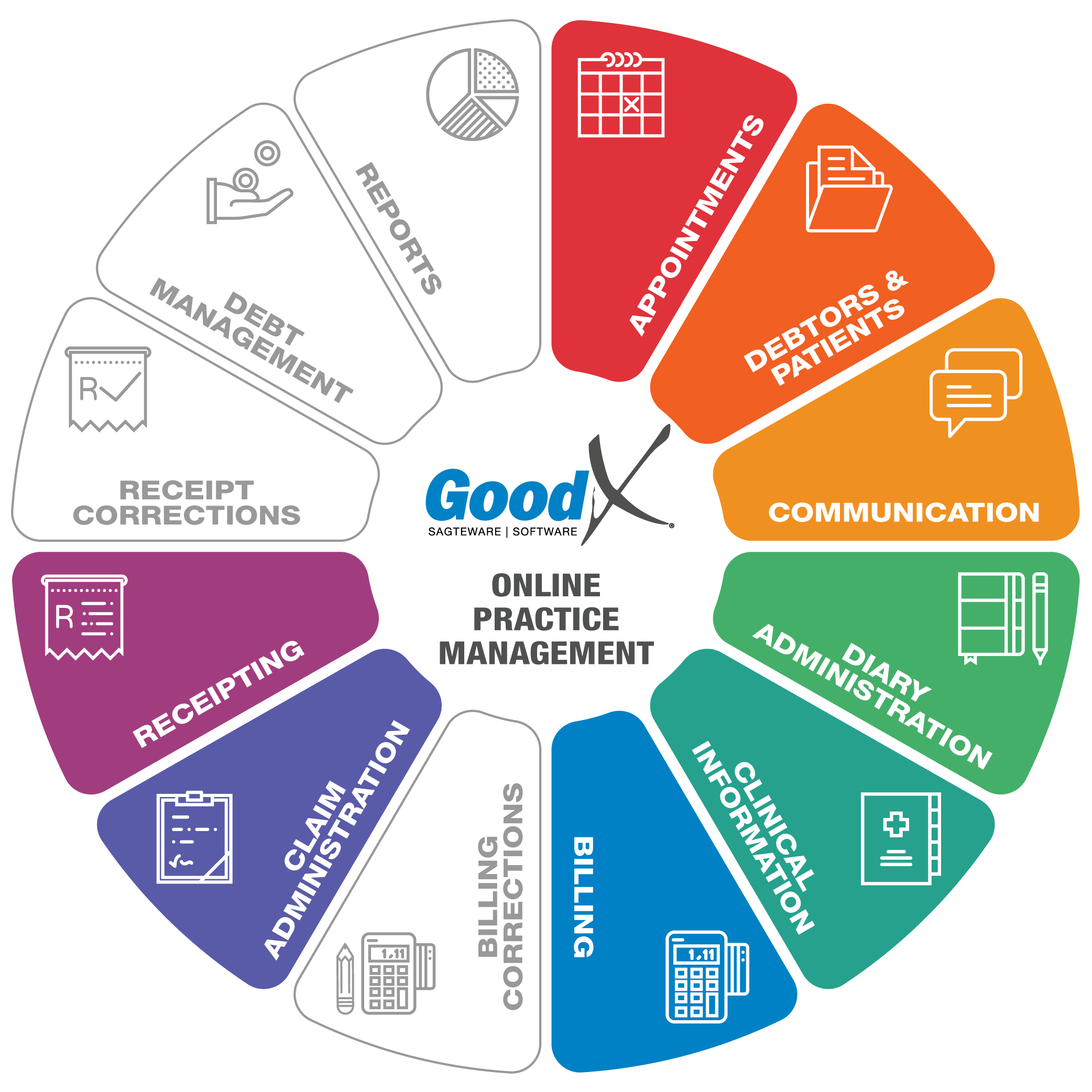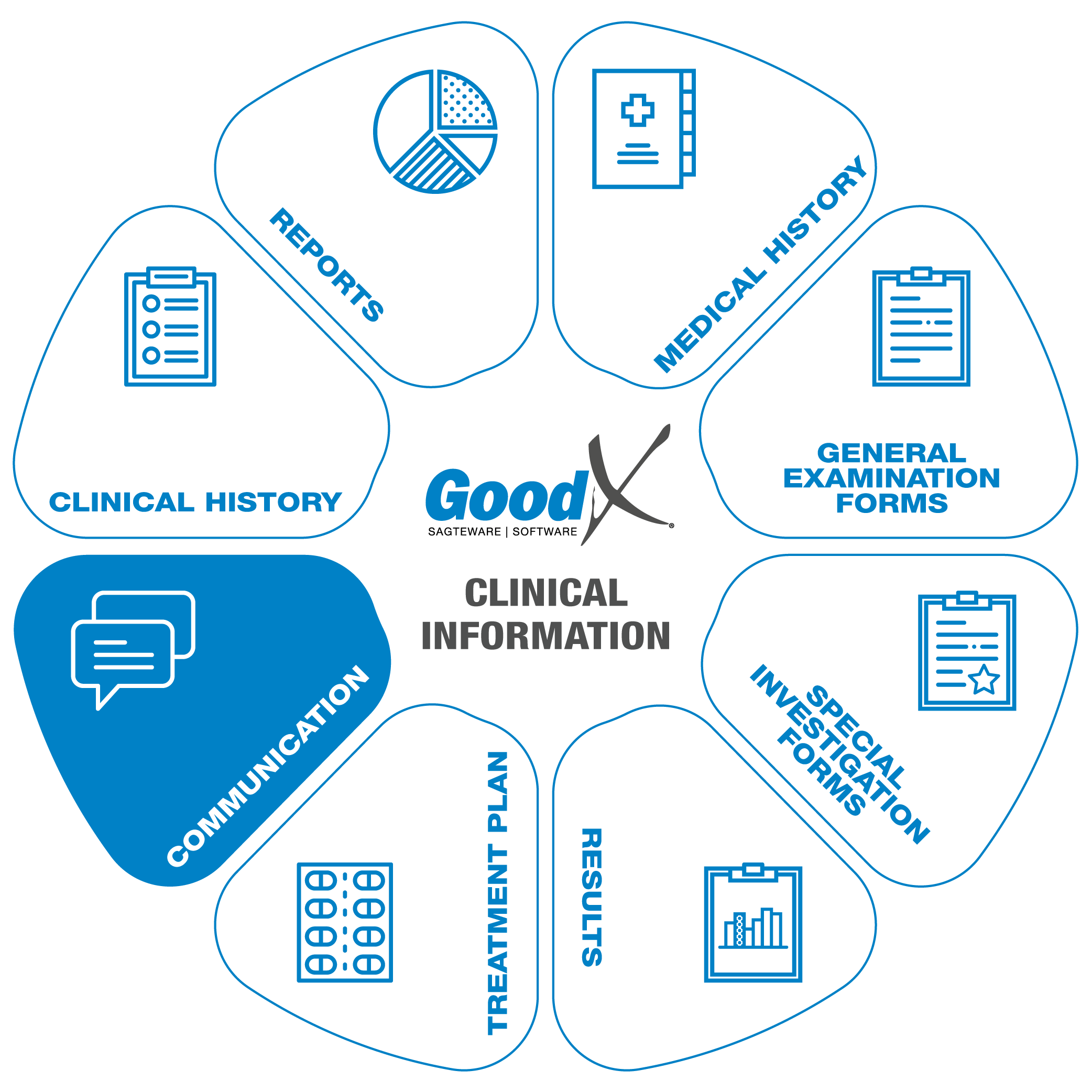Best Practice Guidelines: Telehealth Practice Management

Copyright © 2020 GoodX Software. All rights reserved.
GoodX online Learning Centre
learning.goodx.co.za
6. Consultation phase
6.6. Communication
 Before, during and after
treatment of a patient it may be necessary to communicate with the patient as well as other practitioners.
Before, during and after
treatment of a patient it may be necessary to communicate with the patient as well as other practitioners.
After having discussed the next steps and treatment plan with the patient, you can reassure them that you will be sending them whatever additional information and documents they may require for their treatment or overall healthcare. You may want to consider using a Telehealth platform that allows you to communicate this information, directly to patients through either a patient portal or other modes of communication such as SMS, email, or phone calls. You might include some of the following documents and information:
- Scripts
- Medical Certificates
- Referral letters
- Medical examination report summary
- Treatment plan documents with detailed instructions
- Additional helpful healthcare information
- Patient surveys which allow you to get feedback from patients about their healthcare experience with you
- Custom forms which allow you to monitor patients’ health at home and
- Information about suggested home care monitoring equipment.
Communication: Practitioner & Staff
Before, during, and after the consultation, the practitioner might need to communicate with the practice’s personnel and vice versa. In order to do this, you might consider using tools that integrate with or is part of your Telehealth platform, for maximum efficiency.
Functionalities to consider are: Being able to create tasks for yourself or other personnel.
Here are some examples:
- Create a task for the reception, to send a patient their script and other relevant information
- Create a task for the billing expert, to do the billing of a specific patient
- Create a task for the reception, to book a follow-up appointment with a patient
It is very convenient to have instant messaging functionality so that urgent matters can receive urgent attention.
GoodX offers a couple of methods for communicating with patients and other practitioners, here are some examples:
- SMS/Email/phone calls
- myGrandCentral (myGC)
- Telehealth questionnaire
- Patient surveys
SMS/Email
SMS/Email messages can be sent in bulk or to a specific patient/debtor. For example, an SMS can be sent to a patient to remind them of an appointment they have. Another example is sending a bulk SMS/Email to a filtered list of your debtors/patients to inform them of a promotion or a new disease.
myGrandCentral (myGC)
myGC is a platform that patients can use, to keep their medical profile up to date and where some of their clinical documents are stored, such as scripts and sick notes. Custom forms/questionnaires can also be sent to a patient, via myGC to be completed and can then be reviewed by the practitioner.
Call events
Call events are VOIP calls, that are usually linked to tasks that can be displayed, like appointments in the diary. Call events can also be created independently via the task screen. A call event can be used to discuss a patient’s outstanding balance on their account, etc.